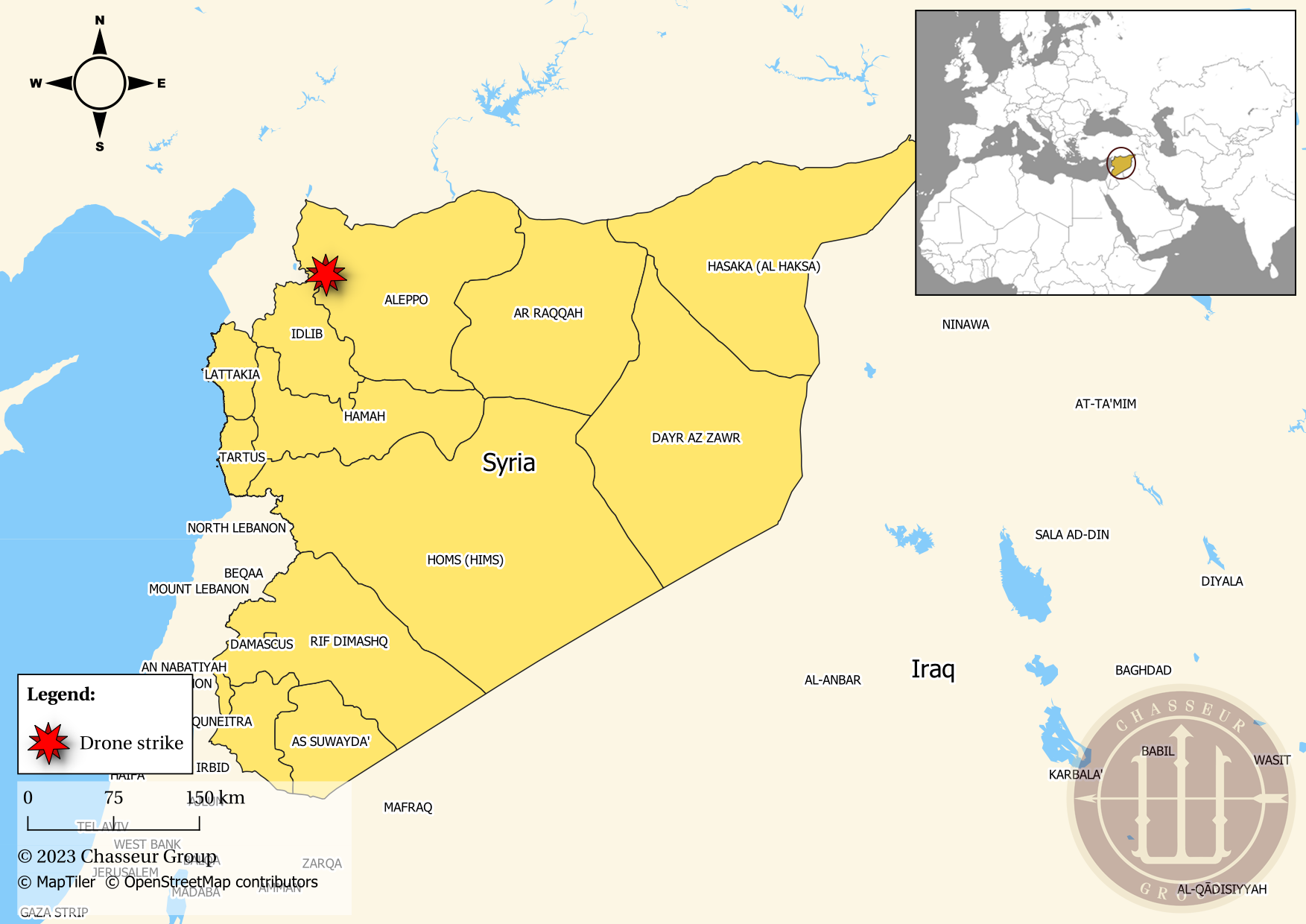FLASHPOINTS: Elimination of ISIS Leader in Syria: How Does It Affect Militancy in Southeast Asia?
The US-led coalition successfully carried out a drone strike targeting senior IS members, resulting in the elimination of Khalid Aydd Ahmad al-Jabouri. While the strike is expected to disrupt IS's ability to plan external attacks, the group remains a threat to the region and beyond.

In brief:
- A successful US-led coalition drone strike in northwestern Syria killed Khalid Aydd Ahmad al-Jabouri, a senior member of the Islamic State (IS) allegedly responsible for planning attacks in Europe and developing the group's leadership structure.
- The Global Terrorism Index (GTI) latest report for 2022 shows the Middle East and North Africa (MENA) experienced a decline in suicide attacks but a surge in firearm usage and attacks on military and police forces, with Iraq experiencing notable decline in terrorism-related fatalities.
- Four groups - IS, Al-Shabaab, Jamaat Nusrat Al-Islam wal Muslimeen (JNIM), and Balochistan Liberation Army (BLA) - were responsible for 47% of total terrorism deaths worldwide in 2022, with the Sahel region in sub-Saharan Africa suffering from the most attacks.
- Despite improvements in the Asia-Pacific region, Southern Philippines experiences sporadic clashes and low-level violence, while Indonesia maintains security pressure through anti-terrorism operations. Climate change could exacerbate the situation, increasing competition for resources that terrorist groups may exploit.
- Despite IS central's decline in Iraq and Syria, the continued activity of their franchise groups suggests the overall risk of terrorist attacks remains significant.

A successful drone strike was carried out by the US-led coalition in northwestern Syria on 3 April 2023, killing senior member of the Islamic State (IS), Khalid Aydd Ahmad al-Jabouri. Al-Jabouri was responsible for planning attacks in Europe and developing the group's leadership structure. The operation resulted in the elimination of the target with a Hellfire missile without causing harm to any civilians. While the success of the strike is expected to disrupt the group's ability to plan external attacks, US Central Command (CENTCOM) General Michael Kurilla warns that IS remains a threat to the region and beyond. A UN report estimated that IS still has around 5,000 to 7,000 combatants in Iraq and Syria, and persists in executing guerrilla attacks against government forces.
Overview of Current Terrorism Trends
This recent strike underscores the effectiveness of persistent pressure on terrorist groups, particularly when timed well and when the target group is struggling to revive operations after previous setbacks, as evidenced by the killing of IS leaders Abu Bakr al-Baghdadi in 2019 and Abu Ibrahim al-Hashimi in 2022. Despite being defeated in Syria almost four years ago, the IS continues to terrorise populations through its sleeper cells, which largely operate in remote desert areas of the country. The most recent IS-related attack took place against Syrians hunting truffles in the desert last February, but given that IS fighters have been less active every year since 2019 and the recent attacks hit civilians rather than tougher security targets, it is too early to tell whether this marks a new resurgence.
The recently published Global Terrorism Index (GTI) by the Institute for Economic Peace evaluated the impact of terrorism in 163 countries across four dimensions, using data from Dragonfly’s TerrorismTracker database up until 31 December 2022. The report found that the Middle East and North Africa (MENA) witnessed a significant decrease in suicide attacks but a surge in firearm usage and attacks on military and police forces. Iraq also experienced a notable decline in terrorism-related fatalities. The GTI report states that specific groups orchestrated two-thirds of the documented attacks, resulting in an average of six casualties per incident from suicide bombings in 2022.
Four terrorist groups, namely the Islamic State (IS), Al-Shabaab, Jamaat Nusrat Al-Islam wal Muslimeen (JNIM), and Balochistan Liberation Army (BLA), were collectively responsible for 47% of total terrorism deaths worldwide that year. The Sahel region in sub-Saharan Africa suffered the most attacks, with 65% of the regional attacks happening in ten Sahel nations. The ten countries most affected by terrorism in 2022 were Afghanistan, Burkina Faso, Somalia, Mali, Syria, Pakistan, Iraq, Nigeria, Myanmar, and Niger. Despite the decline of IS central in Iraq and Syria, the group's franchise groups remain active worldwide.
Asia-Pacific Region: Anticipated Vulnerabilities and Risks
The death of al-Jabouri and the disruption of the group's ability to plot external attacks may be significant in reducing the risk of terrorist attacks in affected regions. Even though the strike targeting al-Jabouri took place in northwestern Syria and would not have a direct impact on Southeast Asia, the disruption of IS's ability to plan external attacks may indirectly impact the region's security situation. Southeast Asia has often been identified as a potential target for IS's expansion and recruitment efforts.
Nevertheless, according to the GTI report, the Asia-Pacific region has experienced improvements in eight countries and deteriorations in three, leading to a diminished impact of terrorism for the fourth consecutive year. Although Indonesia saw a significant drop in the number of attacks, the country witnessed a worsening terrorism impact instead, with attacks becoming more lethal. On the other hand, the Philippines recorded its lowest levels of terrorism since the inception of the GTI, with only 20 attacks and 18 deaths in 2022, falling by 68% and 65%, respectively, compared to the previous year.
However, the overall risk of terrorism remains significant, and certain regions and terrorist groups pose a higher risk than others, as highlighted in the GTI report. As the world recovers from the Covid-19 pandemic, sporadic clashes and low-level violence continue to occur in the Southern Philippines, while Indonesia continues to sustain security pressure through anti-terrorism raids and arrests. Moreover, the continued surrenders of militant members in the Southern Philippines may indicate that the militants are being fatigued by the prolonged military offensive.
Implications
While separatist struggles tied to religious extremism remain the primary driving force behind violence, the GTI report highlights that climate change could exacerbate the situation, increasing competition for resources that terrorist groups may exploit. Although IS central's decline in Iraq and Syria may have reduced the risk in those specific regions, the continued activity of their franchise groups, particularly in sub-Saharan Africa and South Asia, suggests that the overall risk of terrorist attacks remains significant.



